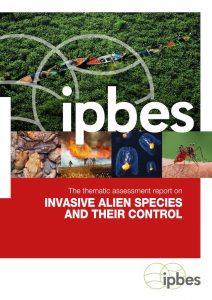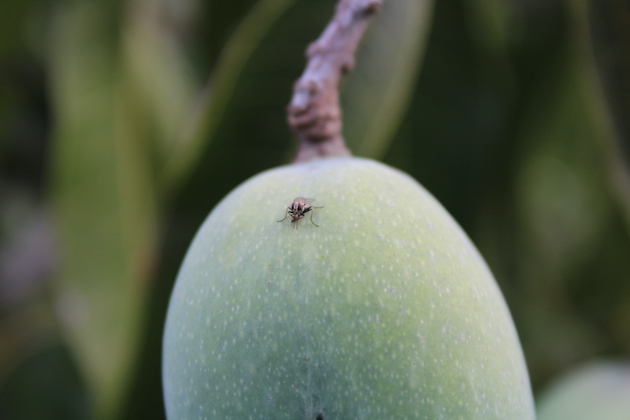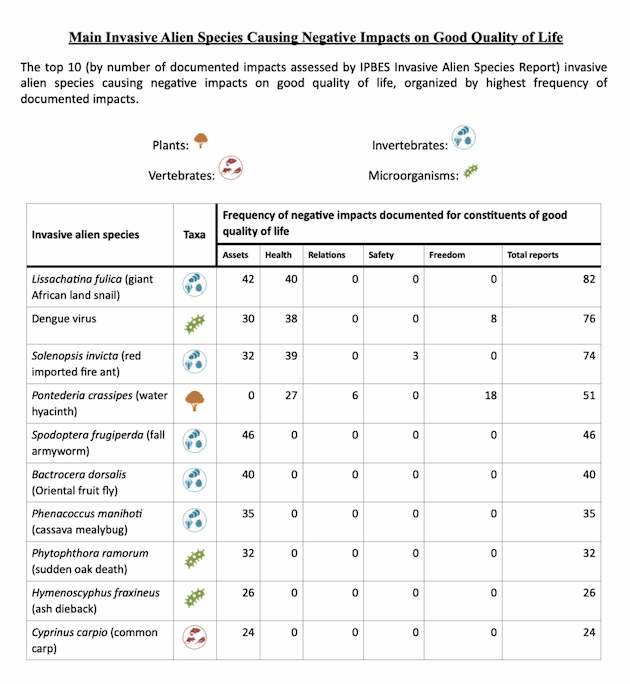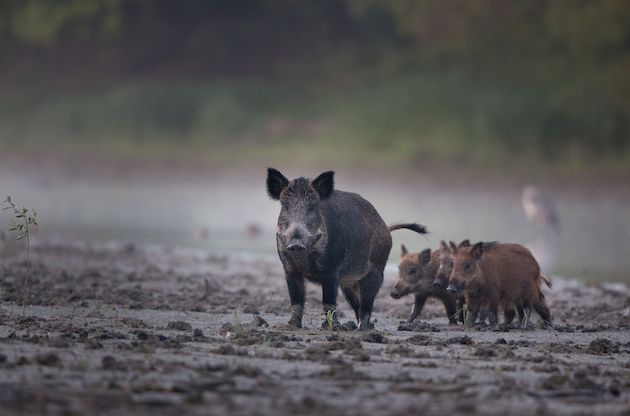Invasive Species, a Fast-Riding Horsemen Galloping the Biodiversity Apocalypse — Global Issues
BULAWAYO AND BONN, Sep 04 (IPS) – Mango farmer Eufria Nyadome used to earn USD 60 from selling a 20-litre bucket of fresh mangoes and now can barely make USD 20 even though her mango trees are giving a good yield. She is throwing away buckets of rotten mangoes.
Nyadome, from Mhondiwa Village in Ward 9 Murehwa District of Zimbabwe, has lost her income to an invasive Oriental fruit fly all the way from Asia. The fruit fly is classified as an invasive alien species, flagged by scientists as one of the leading causes of biodiversity loss around the world. Invasive alien species could be plants, animals or microorganisms that are introduced intentionally or unintentionally into areas where they are not native.
The Oriental fruit fly is one of the 3,500 harmful invasive alien species that a new report by the Intergovernmental Platform on Biodiversity and Ecosystem Services (IPBES) finds are seriously threatening nature, nature’s contributions to people and good quality of life.

According to the Assessment Report on Invasive Alien Species and their Control launched by IPBES this week, more than 37,000 alien species have been introduced by many human activities to regions and biomes around the world. The report finds that the global economic cost of invasive alien species exceeded USD 423 billion annually in 2019, with costs having at least quadrupled every decade since 1970.
From the European shore crab (Carcinus maenas), Lantana (Lantana camera), the Fall Army Worm, (Spodoptera frugiperda), Nile Perch (Lates niloticus) to the water hyacinth (Pontederia crassipes), alien species invasive species have changed and destroyed global biodiversity and ecosystems, causing harm to global economies, human health and wellbeing as well as impacting on food and nutrition security.
Scientists say the conservative estimate of global economic costs is now rising at unprecedented rates.
“Invasive alien species are a major threat to biodiversity and can cause irreversible damage to nature, including local and global species extinctions, and also threaten human wellbeing,” said Helen Roy, co-chair of the assessment report.
In 2019, the IPBES Global Assessment Report found that invasive alien species are one of the five most important direct drivers of biodiversity loss – alongside changes in land- and sea use, direct exploitation of species, climate change and pollution.
Aliens Are Coming
The report warned of increasing invasive alien species worldwide on the back of a growing global economy, intensified and expanded land- and sea-use change combined with demographic changes.
Even without the introduction of new alien species, already established alien species will continue to expand their ranges and spread to new countries and regions, the report said, noting that climate change will make the situation even worse.
“What we demonstrated in this assessment is that the number of alien species is increasing by a huge margin where 200 invasive alien species a year get into an ecosystem; if nothing is done, these numbers are going to increase dramatically and impact food security and human health,” Sebataolu Rahlao, a Coordinating Lead Author of the report, told IPS in an interview.

“We are also saying there are interactions with global changes, including climate change, pollution which all increase the likelihood of invasive alien species increasing in particular areas, for example, climate change has provided opportunities for invasive alien species to thrive like the river red gum (Eucalyptus camaldulensis Dehnh) trees in South Africa have increased because their suitable habitat has increased due to climate change.”
While the IPBES experts confirm that there are insufficient measures to tackle these challenges of invasive alien species, with only 17 percent of countries with national laws or regulations specifically addressing invasive alien species, effective management and more integrated approaches were available solutions.

“The good news is that, for almost every context and situation, there are management tools, governance options and targeted actions that really work,” co-chair of the Assessment chair Anibal Pauchard said, noting that prevention was the best and most cost-effective option in addition to eradication, containment, and control of invasive alien species.
Commenting on the report, Inger Andersen, Executive Director United Nations Environment Programme (UNEP), said humanity has been moving species around the world for centuries, but when imported species run rampant and unbalance local ecosystems, indigenous biodiversity suffers.
“As a result, invasive species have become one of the five horsemen of the biodiversity apocalypse that is riding down harder and faster upon the world,” Andersen said in a statement, adding that, “While the other four horsemen – changing land- and sea use, over-exploitation, climate change and pollution – are relatively well understood, knowledge gaps remain around invasive species.

Fighting the aliens
In Zimbabwe, farmers have taken the fight to the alien invasive species.
“We learnt about the fruit fly that was attacking our mangoes, and we were trained on how to control it from ruining our fruit,” said Nyadome, who is one of 1200 smallholder farmers in the Murehwa District who was trained in Integrated Pest Management (IPM) practices four years ago. IPM involves the use of various pest management practices which are friendly to humans, animals, and the environment.

The International Centre of Insect Physiology and Ecology (ICIPE), based in Nairobi, Kenya, together with various donor agencies and partners, developed an IPM package to manage the invasive fruit fly, which has been promoted under the Alien Invasive Fruit Fly project, a multi-stakeholder initiative under The Cultivate Africa’s Future Fund (CultiAF) by the International Development Research Centre (IDRC) and the Australian Centre for International Agricultural Research (ACIAR).
ICIPE developed bio-based holistic solutions to address the fly problem in East and Southern Africa, such as the male-annihilation technique, which involves mass trapping the male fruit flies using attractants combined with insecticide and the use of “bait stations” — small plastic containers that hold food bait for fruit flies which has an insecticide that kills the flies.
“There is a 100 percent loss in fruit yields when the fruit fly is not controlled, but we have seen that for those farmers who consistently used the IPM package, the fruit fly damage has been reduced, and farmers in most cases have had mango fruit yields of up to 70 percent,” said Shepard Ndlela, an Entomologist with ICIPE and Project manager of the Invasive Fruit Fly project.
IPS UN Bureau Report
Follow @IPSNewsUNBureau
Follow IPS News UN Bureau on Instagram
© Inter Press Service (2023) — All Rights ReservedOriginal source: Inter Press Service
Check out our Latest News and Follow us at Facebook
Original Source





